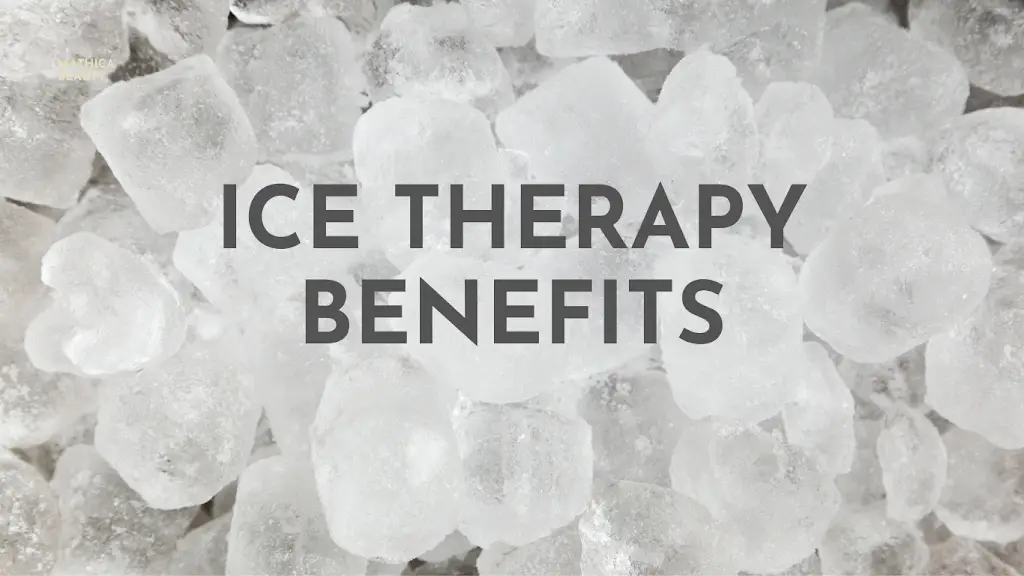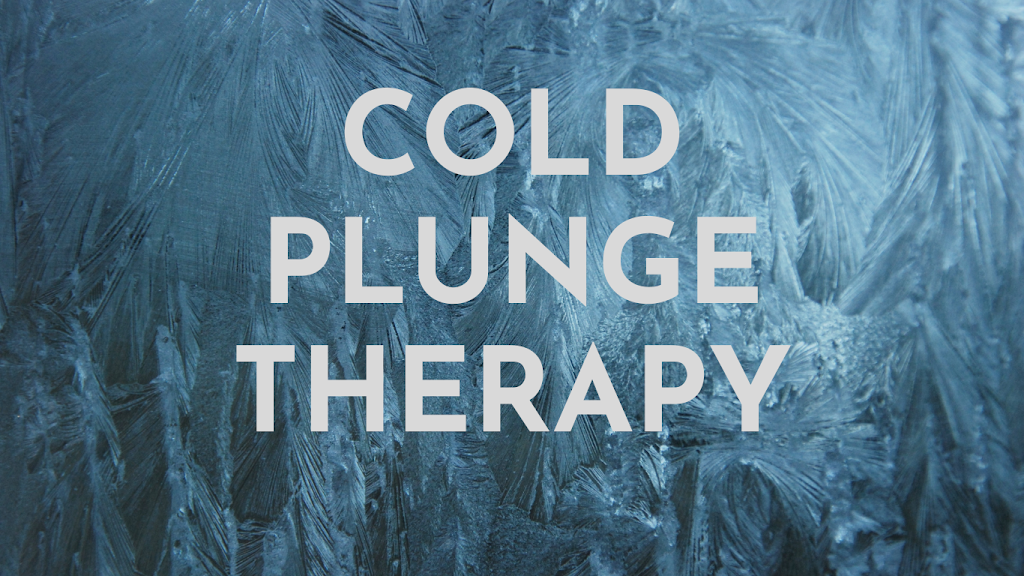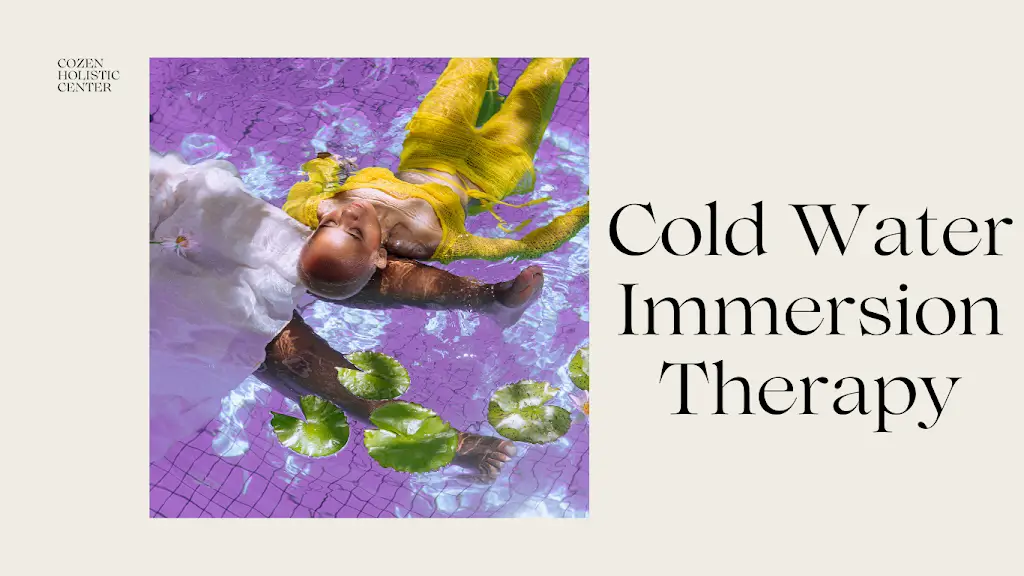Ice Therapy Benefits
Ice therapy, also known as cryotherapy, is a natural
therapy that involves using ice or cold temperatures to treat a wide range of
health conditions. This therapy has been used for centuries to reduce pain,
inflammation, and swelling, and to promote healing. In recent years, there has
been growing interest in the potential benefits of ice therapy for physical and
mental health. In this article, we will explore the benefits of ice therapy in
more detail.
Reduced Pain and Inflammation
One of the most well-known benefits of ice therapy is its
ability to reduce pain and inflammation. When applied to an injured or inflamed
area, ice can help to numb the area and reduce swelling by constricting blood
vessels. This can be particularly beneficial for people with conditions such as
arthritis, bursitis, and tendonitis.
Improved Athletic Performance
Ice therapy can also be used to improve athletic
performance. Athletes often use ice baths to reduce muscle soreness and improve
recovery time after a strenuous workout or competition. Cold temperatures can
help to reduce inflammation and promote healing, allowing athletes to recover
more quickly and get back to their training regimen.
Improved Immune Function
Ice therapy may also have benefits for immune function.
Exposure to cold temperatures can stimulate the production of white blood
cells, which are responsible for fighting off infection and disease. This can
help to boost the immune system and reduce the risk of illness and infection.
Reduced Inflammation
In addition to reducing pain and swelling, ice therapy
can also help to reduce inflammation in the body. Chronic inflammation is
believed to play a role in a wide range of health conditions, including heart
disease, diabetes, and cancer. By reducing inflammation, ice therapy may help
to lower the risk of these and other chronic diseases.
Improved Mental Health
Ice therapy has also been shown to have benefits for
mental health. Exposure to cold temperatures can trigger the release of
endorphins, which are natural painkillers produced by the body. Endorphins can
help to reduce stress, anxiety, and depression, and promote feelings of
relaxation and well-being. Ice therapy has also been shown to increase levels
of norepinephrine, a neurotransmitter that is involved in mood regulation and
cognitive function.
Improved Circulation
The vasoconstriction response that occurs during ice
therapy can also have benefits for circulation. When blood vessels constrict,
the blood is forced to flow through narrower channels, which can increase blood
pressure and improve blood flow to the extremities. This can be particularly
beneficial for people with circulatory problems, such as Raynaud’s disease or
peripheral artery disease.
Enhanced Skin Health
Ice therapy can also have benefits for skin health.
Exposure to cold temperatures can help to tighten pores and reduce
inflammation, which can help to reduce the appearance of blemishes and other
skin imperfections. Ice therapy has also been shown to increase blood flow to
the skin, which can promote healthy skin cell regeneration and improve skin
tone and texture.
Improved Sleep Quality
Ice therapy has also been shown to have benefits for
sleep quality. Exposure to cold temperatures can help to reduce stress and
promote relaxation, which can be beneficial for people who have trouble
sleeping. Ice therapy has also been shown to increase levels of melatonin, a
hormone that regulates sleep and wake cycles.
Weight Loss
Ice therapy has also been shown to have benefits for
weight loss. Exposure to cold temperatures can activate brown adipose tissue
(BAT), which is a type of fat that burns calories to generate heat. Regular ice
therapy can help to increase BAT activity, which can help to boost metabolism
and promote weight loss.
Reduced Risk of Injury
Finally, ice therapy may also help to reduce the risk of
injury. Exposure to cold temperatures can help to reduce inflammation and
promote recovery
Improved Recovery Time
In addition to reducing inflammation
and promoting healing, ice therapy can also help to improve recovery time. When
used after a workout or other physical activity, ice therapy can help to reduce
muscle soreness and fatigue, allowing individuals to recover more quickly and
get back to their regular activities.
Reduced Migraine Symptoms
Ice therapy has also been
shown to have benefits for individuals who suffer from migraines. Applying a
cold compress to the head or neck can help to reduce the severity of migraine
symptoms, including pain, nausea, and sensitivity to light and sound.
Reduced Risk of Heart
Disease
Ice therapy may also help
to reduce the risk of heart disease. Exposure to cold temperatures can help to
reduce blood pressure and improve circulation, which can help to lower the risk
of heart disease and other cardiovascular conditions.
Reduced Risk of Cancer
Some studies have
suggested that ice therapy may also help to reduce the risk of certain types of
cancer. Exposure to cold temperatures can help to reduce inflammation and
oxidative stress, which are known risk factors for cancer.
Reduced Risk of
Alzheimer’s Disease
Ice therapy may also have
benefits for brain health. Exposure to cold temperatures can help to reduce
inflammation in the brain, which has been linked to the development of
Alzheimer’s disease and other cognitive disorders. Ice therapy may also help to
improve blood flow to the brain, which can promote healthy brain function.
Improved Fertility
Ice therapy may also have
benefits for fertility. Exposure to cold temperatures can help to increase
sperm production in men, and may also help to improve ovulation in women. Some
studies have suggested that regular ice therapy may help to increase the
chances of pregnancy in couples who are struggling with infertility.
Improved Digestive Health
Ice therapy may also have
benefits for digestive health. Exposure to cold temperatures can help to reduce
inflammation in the digestive tract, which can be beneficial for individuals
with conditions such as irritable bowel syndrome (IBS) and inflammatory bowel
disease (IBD). Ice therapy may also help to improve digestion and nutrient
absorption.
Reduced Anxiety and
Depression
Ice therapy has also been
shown to have benefits for individuals who suffer from anxiety and depression.
Exposure to cold temperatures can help to trigger the release of endorphins,
which can help to reduce stress and promote feelings of relaxation and
well-being.
Improved Joint Health
Ice therapy can also have
benefits for joint health. Cold temperatures can help to reduce inflammation in
the joints, which can be beneficial for individuals with conditions such as
osteoarthritis and rheumatoid arthritis. Ice therapy may also help to improve
joint mobility and reduce pain.
Reduced Menstrual Cramps
Finally, ice therapy may
also help to reduce the severity of menstrual cramps. Applying a cold compress
to the lower abdomen can help to reduce inflammation and muscle spasms, which
are common causes of menstrual cramps.
In conclusion, ice therapy
has a wide range of potential benefits for physical and mental health. From
reducing pain and inflammation to improving athletic performance, immune
function, and skin health, ice therapy may be a natural and effective way to
promote overall health and well-being. However, it is important to consult with
a healthcare provider before beginning any new therapy or treatment, especially
if you have a pre-existing medical condition.





